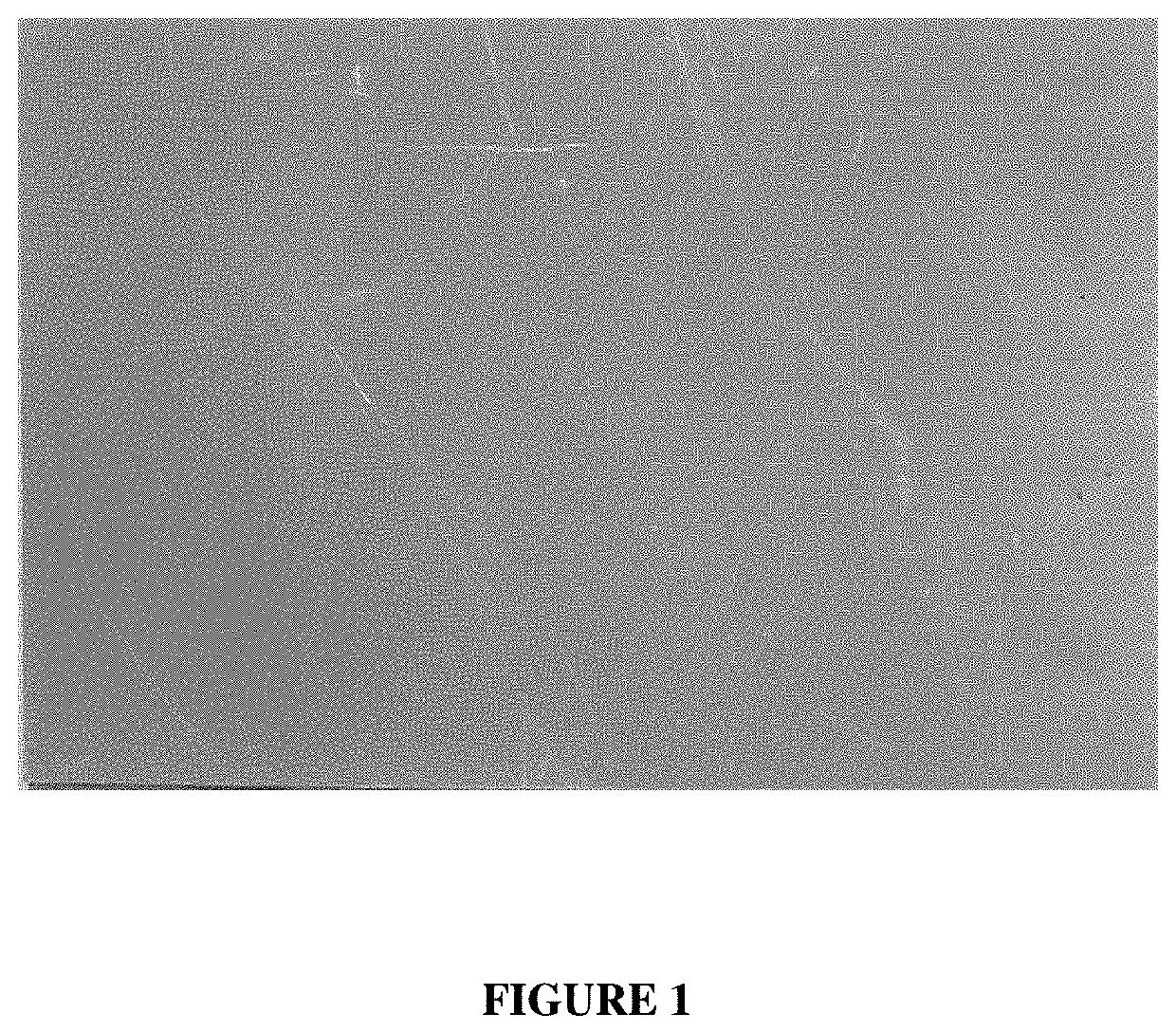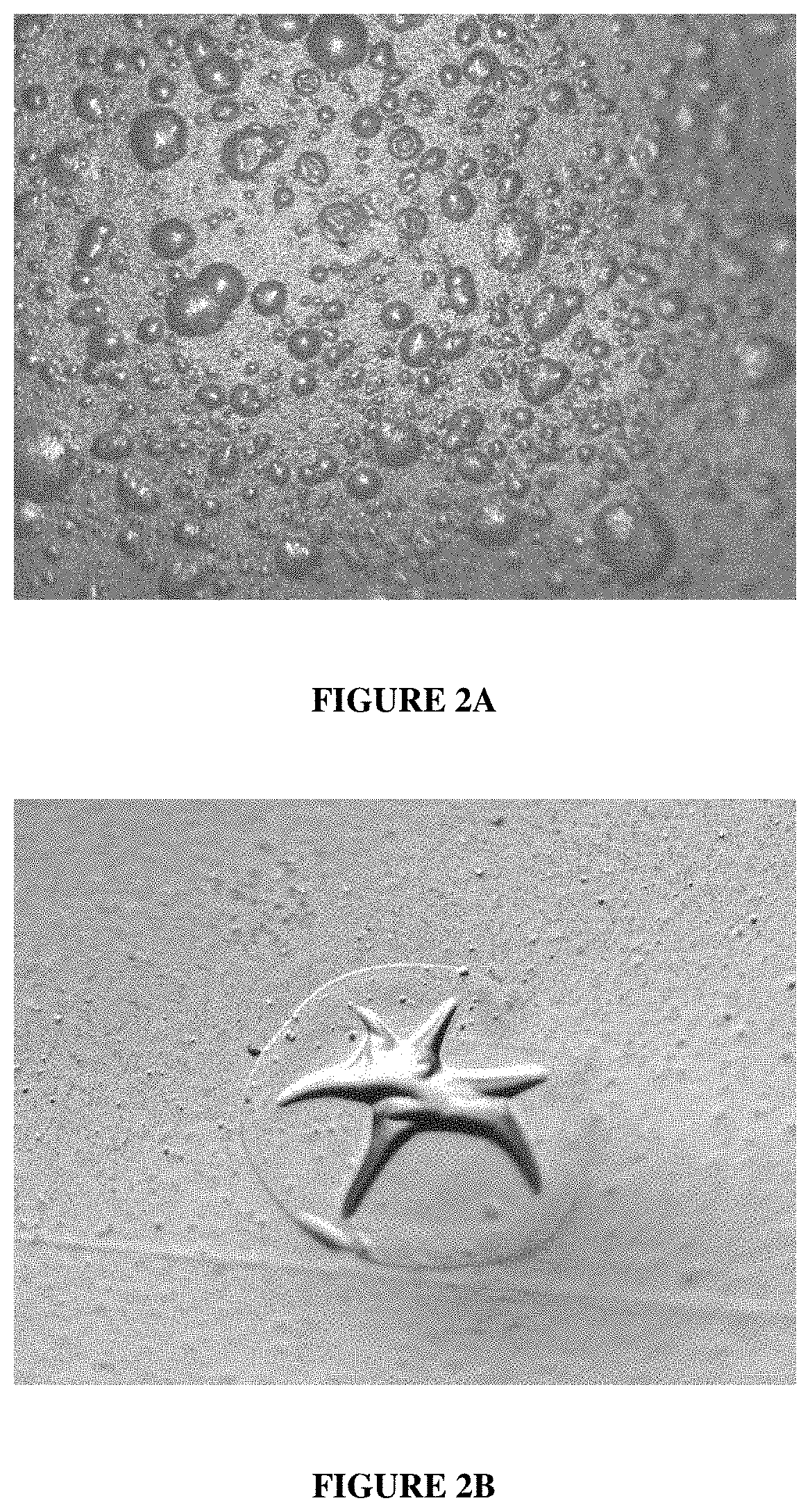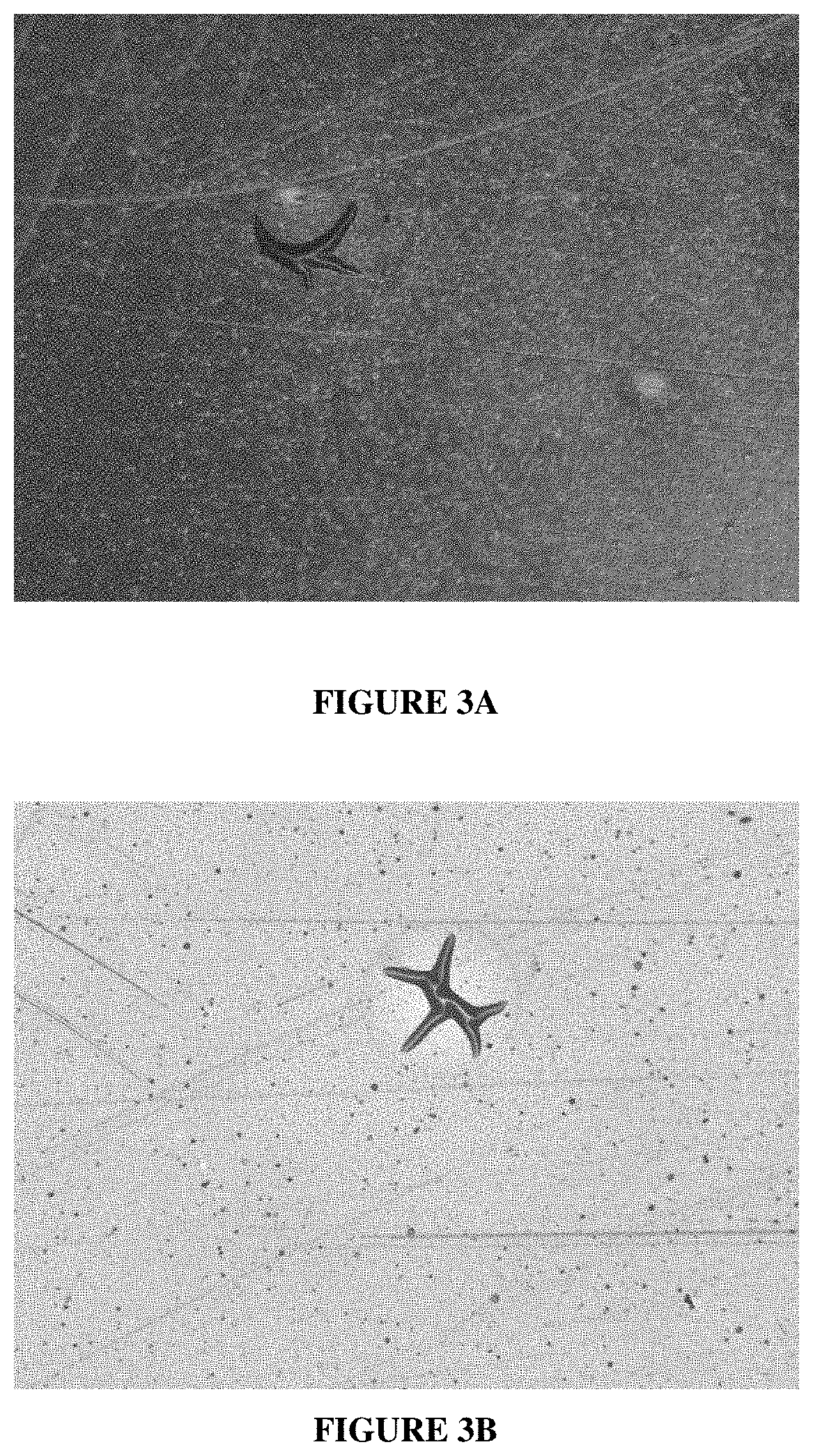Electroless copper plating compositions and methods for electroless plating copper on substrates
a technology of electroless plating and copper, applied in the direction of liquid/solution decomposition chemical coating, metal material coating process, coating, etc., can solve the problem of high plating potential, high bath activity, high plating rate, etc., to achieve good through-hole wall coverage, increase the electroless copper plating rate, and low plating
- Summary
- Abstract
- Description
- Claims
- Application Information
AI Technical Summary
Benefits of technology
Problems solved by technology
Method used
Image
Examples
example 1
Through-Hole Coverage Over Several MTO with the Aqueous Alkaline Electroless Cooper Composition of the Preset Invention
[0074]The following aqueous alkaline electroless copper composition of the invention is prepared having the components and amounts disclosed in Table 1 below.
TABLE 1COMPONENTAMOUNTCopper sulfate pentahydrate 10 g / LSodium potassium tartrate 40 g / LSodium hydroxide 8 g / LFormaldehyde 4 g / L2,2′-dithiodisuccinic acid 0.5 ppmEthyl viologen dibromide 5 ppmGuanidine Hydrochloride0.36 ppmWaterTo one liter
The pH of the aqueous alkaline electroless copper compositions have a pH=12.5 at room temperature as measured using a conventional pH meter available from Fisher Scientific.
[0075]Six (6) each of six (6) different FR / 4 glass epoxy panels with a plurality of through-holes are provided: TUC-662, SY-1141, IT-180, 370HR, EM825 and NPGN. The panels are either four-layer or eight-layer copper-clad panels. TUC-662 is obtained from Taiwan Union Technology, and SY-1141 is obtained...
example 2
Electroless Copper Plating Rate of an Electroless Copper Plating Composition Containing Ethyl Viologen Dibromide Vs. An Electroless Copper Plating Composition Containing Secondary Accelerator Guanadine Hydrochloride
[0095]Three electroless copper plating baths are prepared having the formulations shown in Table 3.
TABLE 3Bath 2COMPONENTBath 1(comparative)Bath 3Copper sulfate 10 g / L 10 g / L 10 g / LpentahydrateSodium potassium 40 g / L 40 g / L 40 g / LtartrateFormaldehyde 4 g / L 4 g / L 4 g / L2,2′-dithiodisuccinic0.5 ppm 0.5 ppm 0.5 ppmacidEthyl viologen 5 ppm— 5 ppmdibromideGuanidine—0.36 ppm0.36 ppmhydrochlorideSodium hydroxideSufficient toSufficient toSufficient tochange tochange tochange todesired pHdesired pHdesired pHWaterTo one literTo one literTo one liter
Each bath is used to plate copper on NP140 bare epoxy substrates from Nanya (Taiwan) at pH values of 11.5 to 13.8. Electroless copper plating is done at 34° C. for 5 minutes. The plating rate is determined by weighing each substr...
example 3
Plating Rate and Through-Hole Plating Performance of Electroless Copper Plating Compositions Containing Increasing Amounts of Ethyl Viologen Dibromide in Addition to Guanidine Hydrochloride
[0096]Electroless copper plating baths are prepared as shown in Table 5.
TABLE 5Bath 4COMPONENT(comparative)Bath 5Bath 6Bath 7Bath 8Bath 9Copper sulfate10 g / L10 g / L10 g / L10 g / L10 g / L10 g / LpentahydrateSodium40 g / L40 g / L40 g / L40 g / L40 g / L40 g / LpotassiumtartrateFormaldehyde 4 g / L 4 g / L 4 g / L 4 g / L 4 g / L 4 g / L2,2′- 0.5 ppm 0.5 ppm 0.5 ppm 0.5 ppm 0.5 ppm 0.5 ppmdithiodisuccinicacidSodium 8 g / L 8 g / L 8 g / L 8 g / L 8 g / L 8 g / LhydroxideGuanidine0.36 ppm0.36 ppm0.36 ppm0.36 ppm0.36 ppm0.36 ppmhydrochlorideEthyl viologen— 1 ppm 2 ppm 5 ppm 10 ppm 20 ppmbromideWaterTo one literTo oneTo oneTo oneTo oneTo oneliterliterliterliter.liter
[0097]A plurality of six different multi-layer, copper-clad FR / 4 glass-epoxy panels with a plurality of through-holes are provided as in Example 1: TUC-662, SY-1141, IT-180, 37...
PUM
| Property | Measurement | Unit |
|---|---|---|
| temperatures | aaaaa | aaaaa |
| temperature | aaaaa | aaaaa |
| temperature | aaaaa | aaaaa |
Abstract
Description
Claims
Application Information
 Login to View More
Login to View More - R&D
- Intellectual Property
- Life Sciences
- Materials
- Tech Scout
- Unparalleled Data Quality
- Higher Quality Content
- 60% Fewer Hallucinations
Browse by: Latest US Patents, China's latest patents, Technical Efficacy Thesaurus, Application Domain, Technology Topic, Popular Technical Reports.
© 2025 PatSnap. All rights reserved.Legal|Privacy policy|Modern Slavery Act Transparency Statement|Sitemap|About US| Contact US: help@patsnap.com



